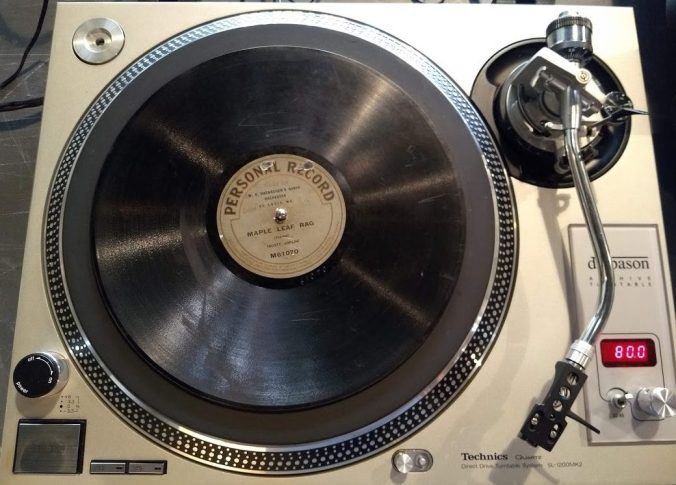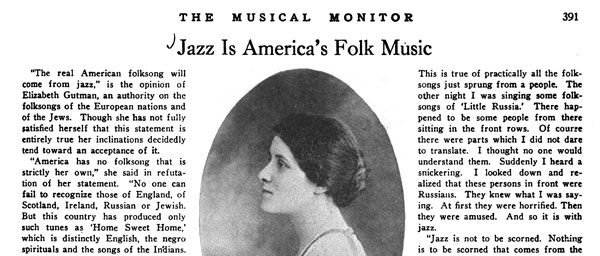It’s only been a little more than a year since Colin Hancock first wrote us up with a rough idea about reissuing the six personal records made by Gus Haenschen and his banjo orchestra in 1916. We’d already released one of them, “Sunset Medley,” on our 2003 issue, Stomp and Swerve—and we’re big fans. So, had Colin located the other five discs?
Well, not exactly.
He had a line on four of the six, thanks to David Sager and Mike Kieffer, with a strong likelihood of the fifth. When that fifth came through, from Rob Chalfen in Boston, we were all getting pretty excited. So close! There was one more, elusive, with rumors of it being in the collections of two mutual friends: “Maple Leaf Rag,” the legendary piece by Joplin, performed by one of his students while the master was still alive. Sager knew where to find it. He told us to go to Joplin’s one-time home, St. Louis, and there we would find it in the collection of the late St. Louis Ragtimer, the great Trebor Tichenor.
Trebor’s daughter Virginia and son-in-law Marty Eggers took David’s advice, went searching among his thousands of 78s and found it! Marty and Virginia, who are spending time between Oakland and St. Louis, graciously worked out a time for us all to meet, Colin drove up from Texas, and we were joined by the fantastic musician T. J. Müller to do a transfer session.
 Continue reading →
Continue reading →


